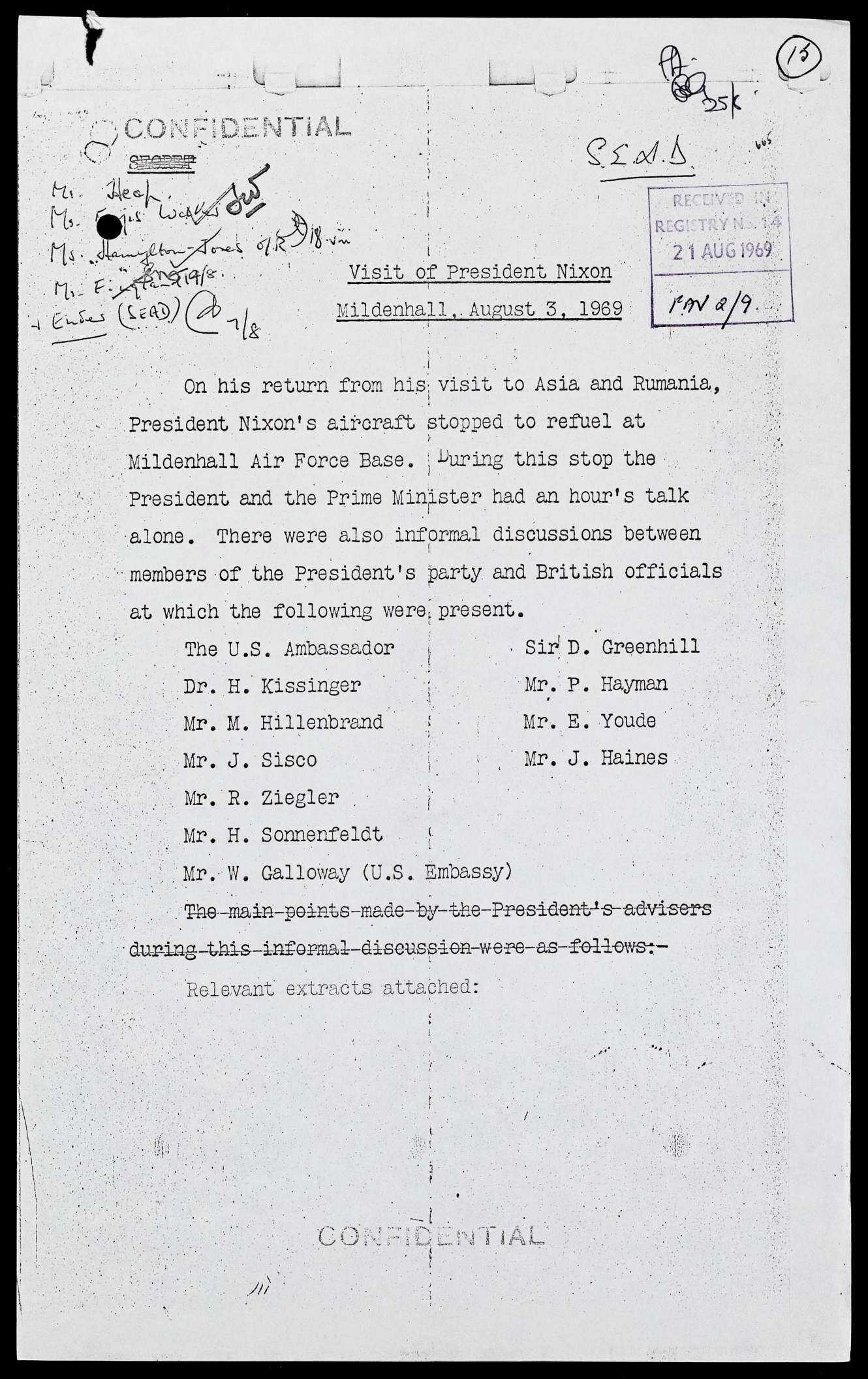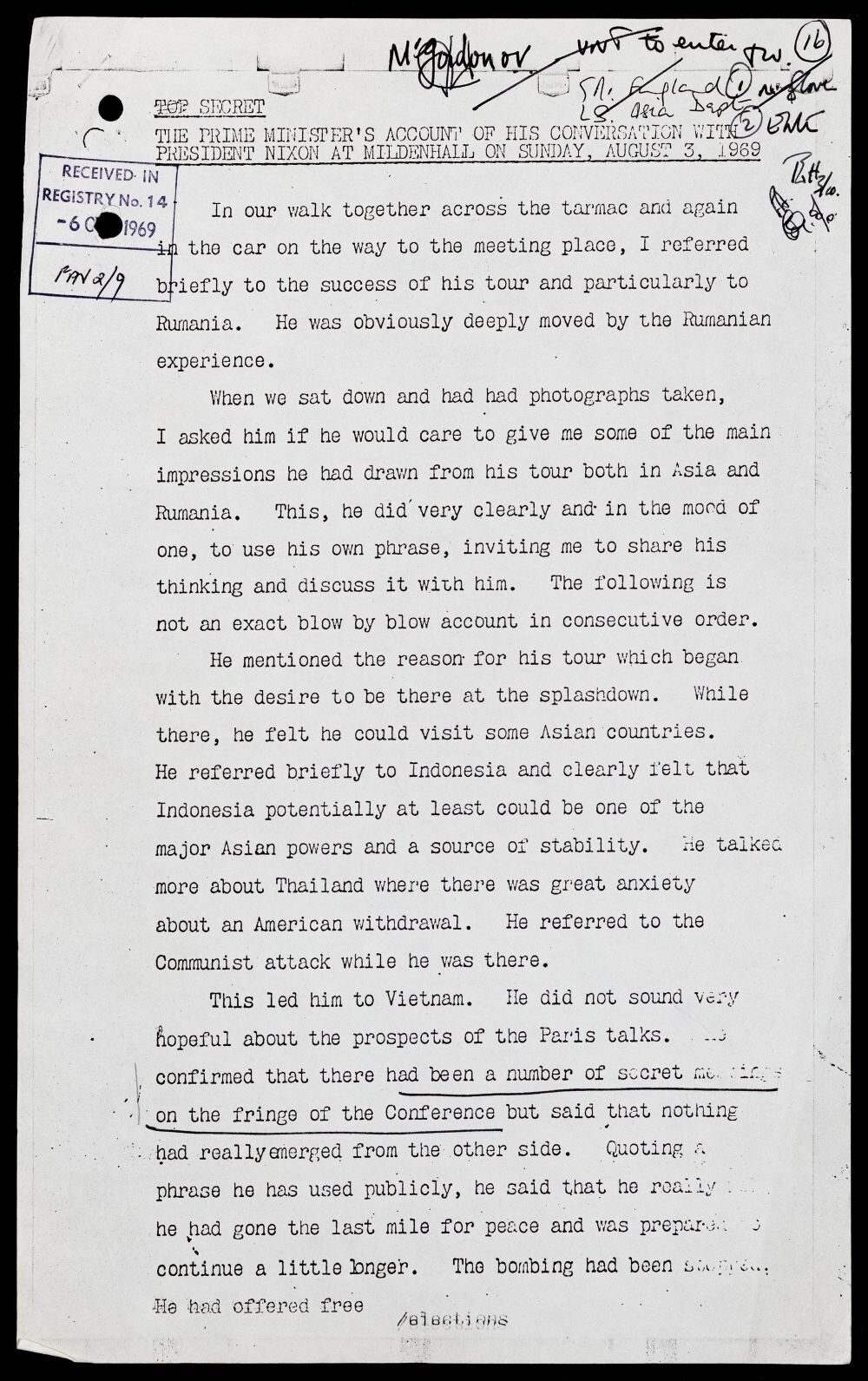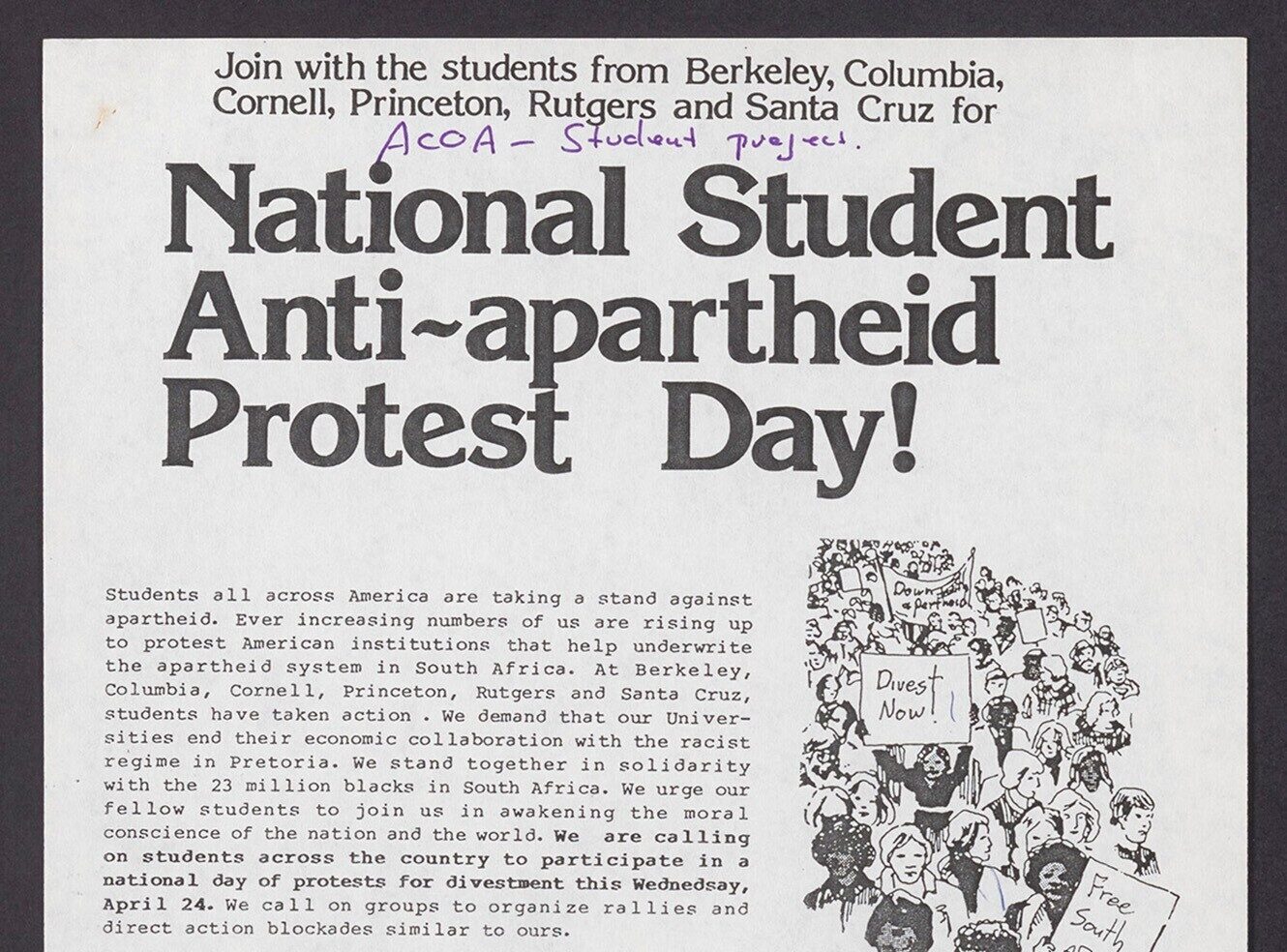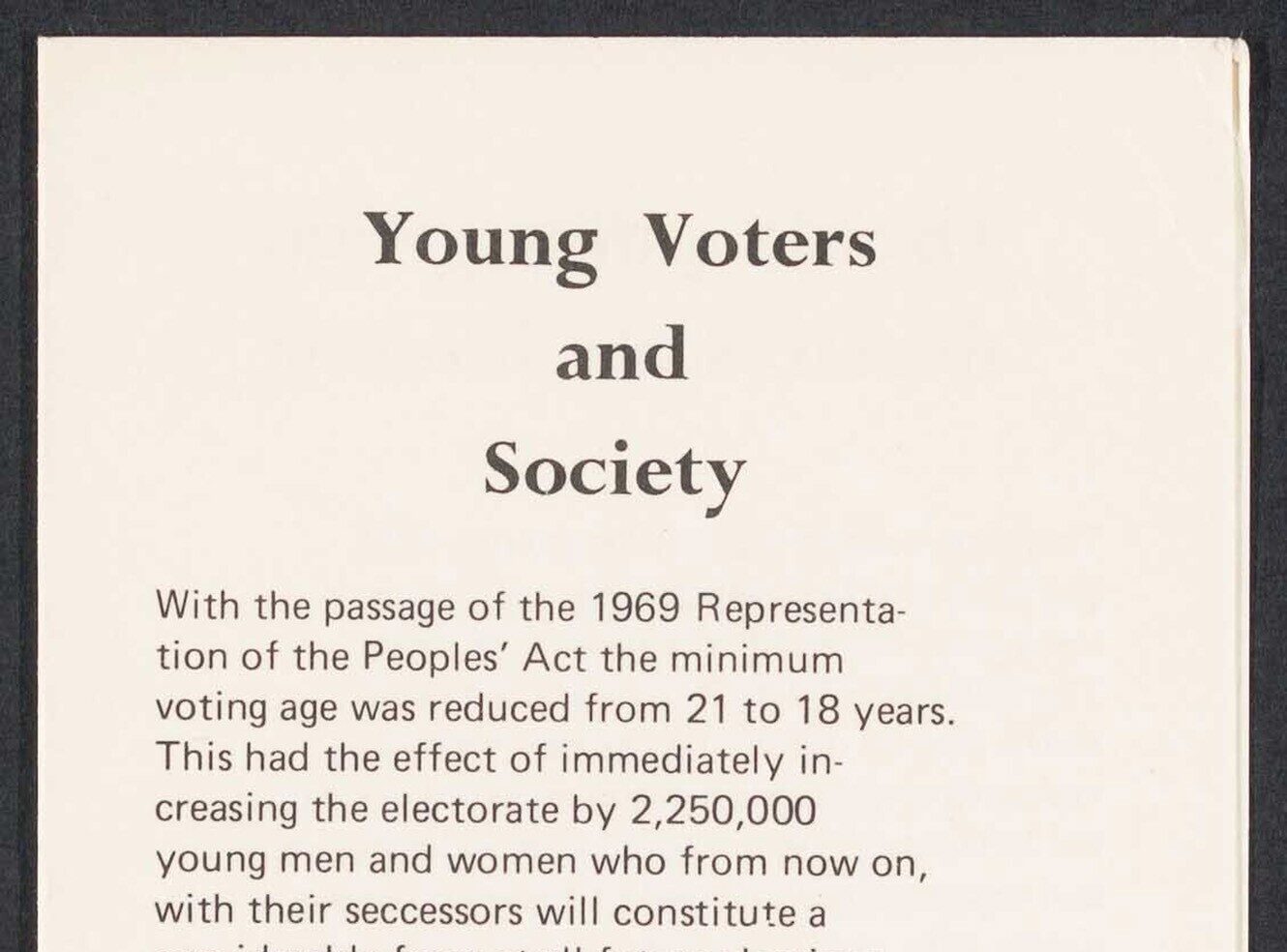Make it brief: Nixon and Wilson on Indochina
August 3, 1969. The soft rumble of the presidential plane engines and the familiar notes of the US national anthem provided the backdrop as President Nixon stepped down from his plane to shake hands with then Prime Minister, Harold Wilson. He had two hours in the UK before his plane was refuelled. What followed was an informal discussion between the two leaders within the commander’s quarters at the U.S Air force base at Mildenhall. The meeting occurred amidst ongoing peace talks in Paris between representatives from the National Liberation Front, North and South Vietnam, as well as growing public concern for US involvement in Vietnam.

FCO 15/1031- ‘First page of meeting summary. Images, including Crown Copyright images, are reproduced by courtesy of The National Archives, London, England. www.nationalarchives.gov.uk’
As documented by Wilson within one file in Conflict in Indochina: Foreign Office Files for Vietnam, Laos and Cambodia: Section II: Escalation, Reunification and Withdrawal, 1965-1979, Nixon relayed the reality of the Paris peace talks to him: North Vietnam were not willing to engage in discussion. Nixon appeared without hope that the outcome of the Paris talks would be positive but that ‘he really had gone the last mile for peace and was prepared to continue a little longer’. This revelation appeared at odds with the optimism noted further on in the file from May of the same year, when there was hope towards ending the war within a year after Nixon outlined his Eight Point peace proposals.
Wilson reports that for Nixon, failure to win the war in which they were actively engaged would cause ‘psychological problems for the American Government’. Nixon had ‘no intention of withdrawing from Vietnam except on terms he could defend’ and terms that would justify the US presence in the first instance. Just a month earlier, Nixon had introduced his policy of Vietnamization, with the ultimate aim to hand back responsibility of the ground war to South Vietnamese forces. If the US Government should fail in executing the right choices, the faith of Asian countries in America’s sincerity and determination would be destroyed and the President feared isolation from Asia and Europe as a result. Wilson agreed.

FCO 15/103- ‘Wilson’s account of conversation with Nixon. Images, including Crown Copyright images, are reproduced by courtesy of The National Archives, London, England. www.nationalarchives.gov.uk’
On a broader view of the situation, Wilson notes that Nixon made it clear that the United States would ‘not get involved again in a major war on the mainland of Asia’. What Wilson believed Nixon was trying to convey was that ‘they would not fight a war [again] by… commitment or infiltration, as in Vietnam’.
It was nearly four more years of meetings and negotiations, both in secret and in Paris between the US, Saigon and Hanoi, before the Paris Peace Accords were signed in 1973. Throughout this time, both North and South Vietnam continued to engage in warfare. American public support for the war had depleted and pressure on Nixon to withdraw troops grew immensely. Ultimately, Nixon’s Vietnamization was a failure as once the final US troops left Vietnam in 1973, North Vietnamese forces moved to take Saigon. In 1975, Vietnam was reunified under communist control.
About the author:
Danielle Cairney is an assistant editor at AM.
About the collection:
Conflict in Indochina: Foreign Office Files for Vietnam, Laos and Cambodia, 1959-1964: Section II: Escalation, Reunification and Withdrawal, 1965-1979 is available now. The document included in the article is FCO 15/1031: ‘President Nixon’s UK visits’ and is available open access for 30 days.
Recent posts

The blog highlights American Committee on Africa, module II's rich documentation of anti-apartheid activism, focusing on the National Peace Accord, global solidarity, and student-led divestment campaigns. It explores the pivotal role of universities, protests, and public education in pressuring institutions to divest from apartheid, shaping global attitudes toward social justice and reform.

This blog examines how primary sources can be used to trace the impact of young voices on society, particularly during pivotal voting reforms in the UK and the US. Explore materials that reveal insights into youth activism, intergenerational gaps, and societal perceptions, highlighting their interdisciplinary value for studying youth culture, activism, and girlhood across history.
